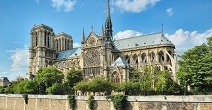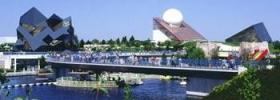 Home
Home- > Tours
- > Rhône-Alpes
- > Loire
- > Saint-just-en-chevalet
- > Saint-just-en-chevalet
Saint-just-en-chevalet
| Topic | Sciences and discovery |
| Departure | SAINT-JUST-EN-CHEVALET (42) |
| Details | Saint-Just-en-Chevalet is a french town, located in the department of the Loire and the Rhone-Alpes area. Saint-Just-en-Chevalet belongs to Forez. |
Discover Saint Just en Chevalet
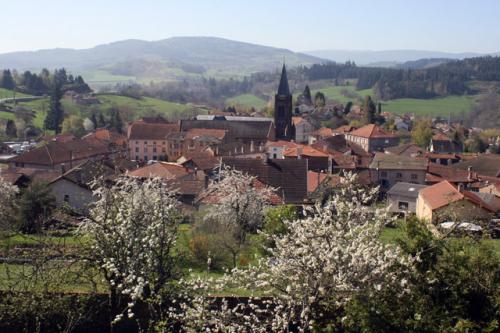
The town is the capital of the district of Pays D’Urfé which consists of 10 villages nestling in beautiful varied countryside set, as it is, between 3 mountain ranges cut with deep river valleys.St Just en Chevalet nestled between mountains Peaceful yet accessible as St Just en Chevalet is situated only 10km from the A89 motorway which links the area with Clermont Ferrand, St Etienne and Lyon.
The town has a population of 1,273, down from 2,100 in 1986 but recently stabilized and set to increase again thanks to the efforts of the village authorities.
The town has all necessary shops and services to sustain a holiday in the area including high quality hotels, restaurants, gites and chambres d’hôtes and a well appointed camp site (2 stars) with a total of 62 plots available. The town has a waste pump-out and water re-fill facility available for caravans and camper vans. This is situated on the Boulevard De L’Astrée in the village centre.
The village swimming pool is located adjacent to the camp site and benefits from water heated to a constant 26ºC and has a waterslide. It is open from 15th June until the end of August (into September weather permitting). Also in the vicinity of the pool are tennis courts and mini-golf.
There are 500 km of clearly way marked footpaths/bridleways and over 1000km of mountain bike trails in the area. There is plenty of challenging road cycling in the region as well. There are organised mountain and road rides available locally.
Accommodation nearby
The places for visiting of Saint-Just-en-Chevalet
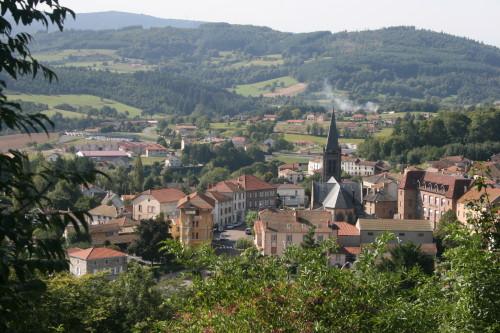
The remains of the feudal château of the dukes of Bourbon and Urfé are situated at the top of the village and provide a panorama over the village and the surrounding countryside. The 14th Century gothic chapel of “Notre Dame du Château” is situated in the grounds of the château and it contains the heart of Anne D’Urfé brother (yes brother) of the novelist Honoré D’Urfé.
Just below the chateau lies the Fontaine de la Conche which dates from 1564. It consists of two containers, the upper one provided drinking water and the lower part acted as a water trough. It is surmounted by an iron cross. The grooves in the trough were made by the local woodsmen sharpening their axes. The fountain is surrounded by buildings which were once some of the many hotels which existed in the village in the early 20th Century.
The church in the centre of the village is the main parish church of the village and was built in the neogothic style in dark volcanic stone towards the end of the 19th Century. The money for the church, and the private Collège St Camille School which stands behind it, was provided by the Rochetaillée family, who give their name to one of the main squares in the town. It contains a gilded baroque-style altarpiece depicting the Madonna and Child and a Pieta (Mary mourning over the body of Christ). This is one of the few remaining relics of the old church which stood on the same site.
The church also contains a beautiful organ, originally built by, and named after, the renowned maker Cavaille-Coll for the Russian Imperial Court but never delivered due to the Russian Revolution.
Opposite the church, in front of the Post Office, is a statue known as “The Solitaire”, a bronze statue depicting a wild boar being attacked by a pack of hounds. It dates from the 19th Century and was donated to the village in 1937.
Accommodation nearby
Visit the Champoly village
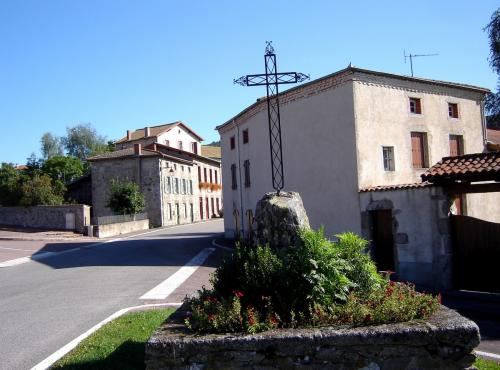
Situated 9km south of St Just en Chevalet the village is named from “Campo Polito” an area where vegetation was cleared and agriculture began in the 9th Century.
The village is best known for the Château D’Urfé which dominates the region. The site was fought over by the local warlords since the 12th Century. The current building was built at the end of the 14th and beginning of the 15th centuries and was the seat of the powerful Urfé family. It was effectively a frontier chateau between the Forez, the Auvergne and the Bourbonnais. It fell into disrepair (and became a source of stone for local buildings) at the time of the revolution. Since the 1950’s restoration work is carried out by volunteers each summer. It is now possible to climb the round keep tower and take in the magnificent view from the top. There is a viewing table to allow you to identify what is in view.
On a clear day it is possible to see Mont Blanc and the Alps in the east and the Puy de Dôme in the west as well as 5 other ranges.
Accommodation nearby
Visit the village of Saint Romain d'Urfé
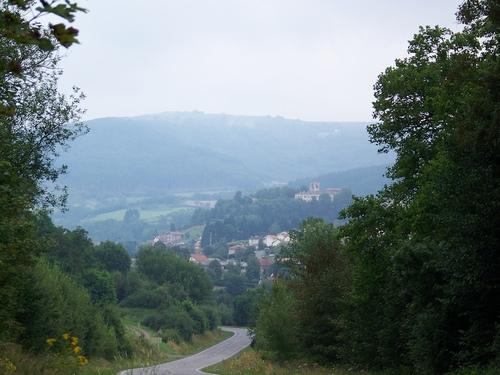
The centre of the village, which is situated on a hill around 5 km South West of St Just en Chevalet, has the only Renaissance style church in the region which dates from the 15th and 16th Centuries. On the edge of the village the Chapel of St Roch sits on a rock with good views over the surrounding countryside. A megalith and the discovery of flint tools in the village shows evidence of occupation of this site for thousands of years.
Accommodation nearby
Latest news on : Saint-Just-en-Chevalet
Tourism near
 Visit the city of Saint-just-en-chevalet
Visit the city of Saint-just-en-chevalet - 1 Museum
- 3 Monuments
Tours
 Welcome to Lure
Welcome to Lure
 Welcome to the mountain of Haut-Forez
Welcome to the mountain of Haut-Forez























